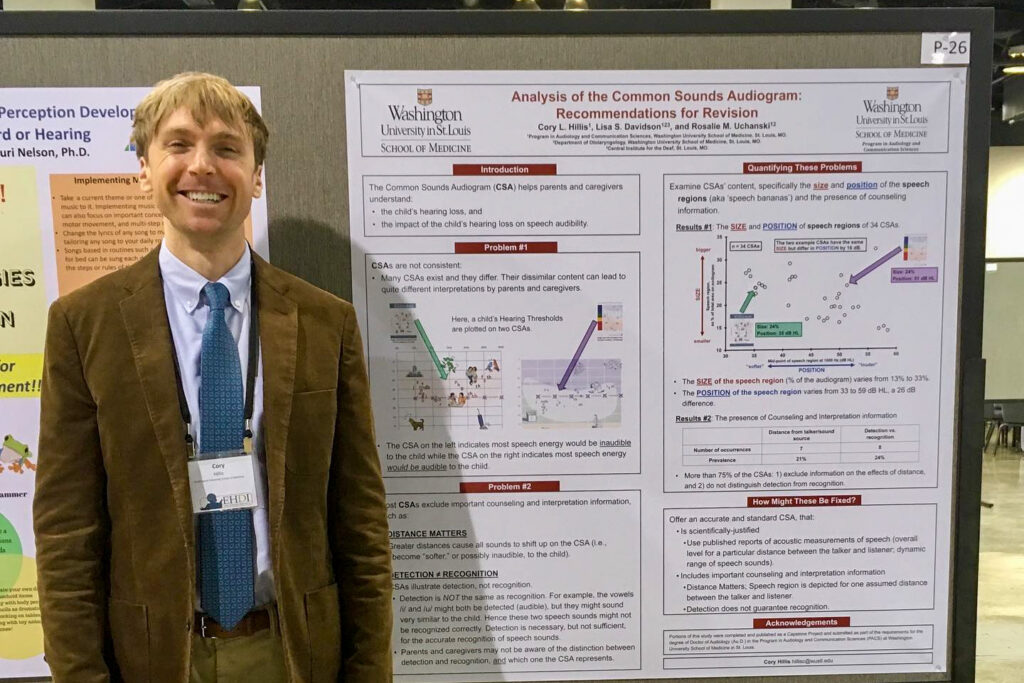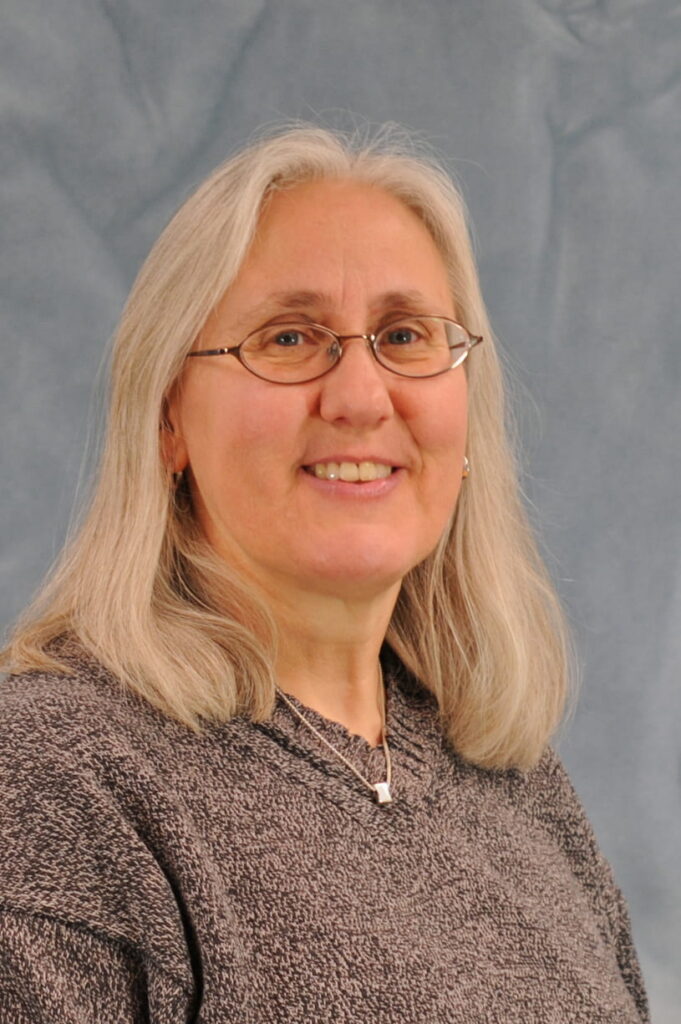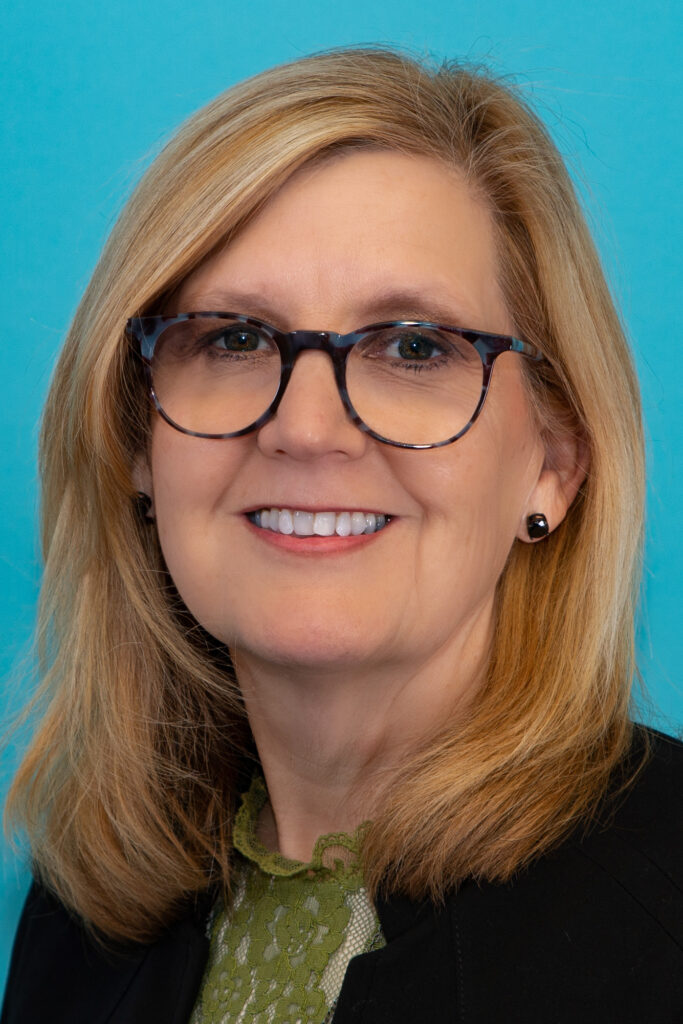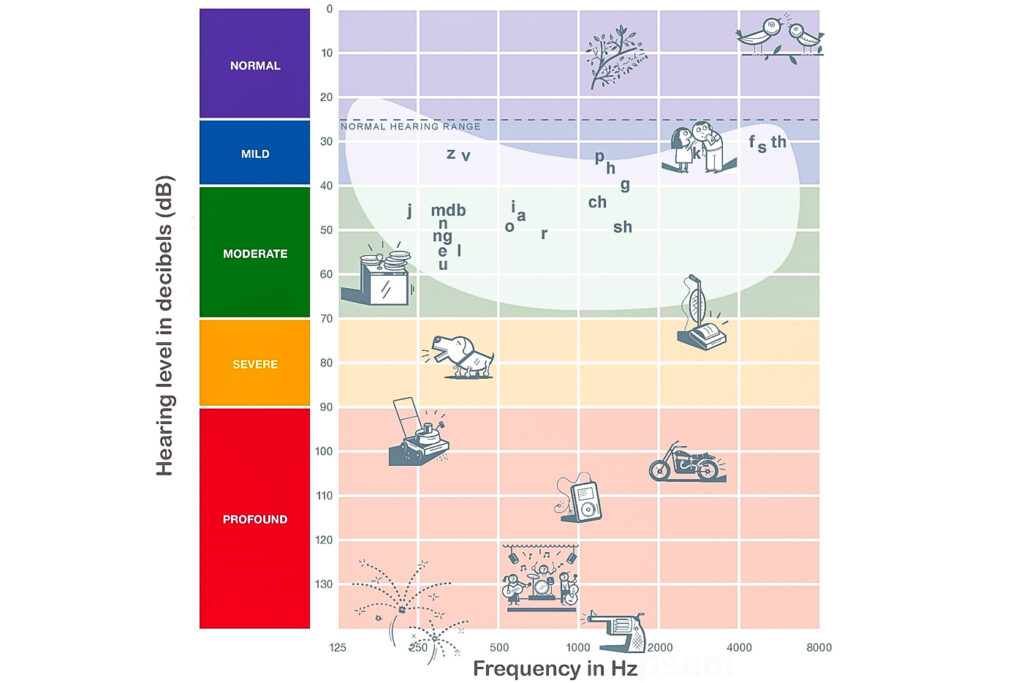A team of WashU researchers is working to standardize a common hearing test to improve parents’ understanding of their child’s hearing loss and provide better counseling on hearing interventions. Leading the effort are Otolaryngology faculty Rosalie Uchanski, PhD, and Lisa Davidson, PhD, and former audiology student Cory Hillis.
When an infant is diagnosed with hearing loss, a Common Sounds Audiogram or CSA is often the first diagnostic tool parents see when visiting with an audiologist. This audiogram plots the child’s hearing thresholds to indicate their ability to hear speech and environmental sounds. The accuracy of the CSA and associated counseling information are therefore integral to the parents’ understanding of what their child can hear and the parents’ role in the child’s future hearing care and interventions.

Unfortunately, the CSA is not a standardized test, and those available from professional organizations, device manufacturers and clinics can vary wildly. These differences can profoundly affect the clinician’s and parents’ interpretation of hearing loss and their inclination to support invention strategies that might benefit the child.
The team analyzed 36 readily-available CSAs for their depiction of individual speech sounds and the speech region, also known as the speech banana because of its shape. The speech region’s physical properties for English are objective and measurable for any communication situation, such as talking to another person at a distance of three feet. In spite of this, the depictions of the speech regions on CSAs varied considerably. The vertical placement of the speech region varied by 25 dB across those analyzed. And, the size (area) of the speech region varied by more than a factor of two.

The same CSAs were also examined for inclusion of important counseling information, like assumed distance between the talker and listener, the distinction between detection versus identification of speech sounds, and for errors in the graph axes or labels. Most CSAs offered no counseling or explanatory information which could assist with parents’ understanding of the impact of their child’s hearing loss on spoken language development. Such additional information might be especially appreciated and referenced when parents are no longer in the clinicians’ offices.
Surprisingly, most CSAs did not mention that the vertical position of the ‘speech region’ on the audiogram is appropriate only for one particular distance between a talker and listener, and that the ‘speech region’ would shift upward, to a ‘softer’ position, when that distance increases – such as when a talker and listener are in different rooms of the house.
Recommendations made by the team to establish a more accurate, standardized and family-useful CSA include:
- adoption of a standardized speaker-listener situation
- removal of environmental sounds
- use of a standard selection of speech sounds using adult female talkers
- use of speech-sound patterns instead of single letters for certain vowel sounds
- inclusion of critical counseling information

“The counseling portion is important,” said Uchanski. “Important counseling should include information relating talker distance and how it affects the location of the speech region as well as an explanation of the difference between simple detection and identification of a speech sound.”
“It is a little disconcerting to see so much variability in a diagnostic tool that is so widely used,” said Davidson. “We hope this analysis makes audiologists more aware of the large variations among readily-available CSAs and of the possible repercussions of using non-standardized versions.”
To learn more about the Common Sounds Audiogram or other ongoing research in the Davidson Lab, please contact Lisa Davidson.
Hillis, CL, Uchanski, RM, and Davidson, LS (2023). Common Sounds Audiograms: Quantitative Analyses and Recommendations. Semin Hear, 44(Suppl 1), S49-S63. https://doi.org/10.1055/s-0043-1764128
